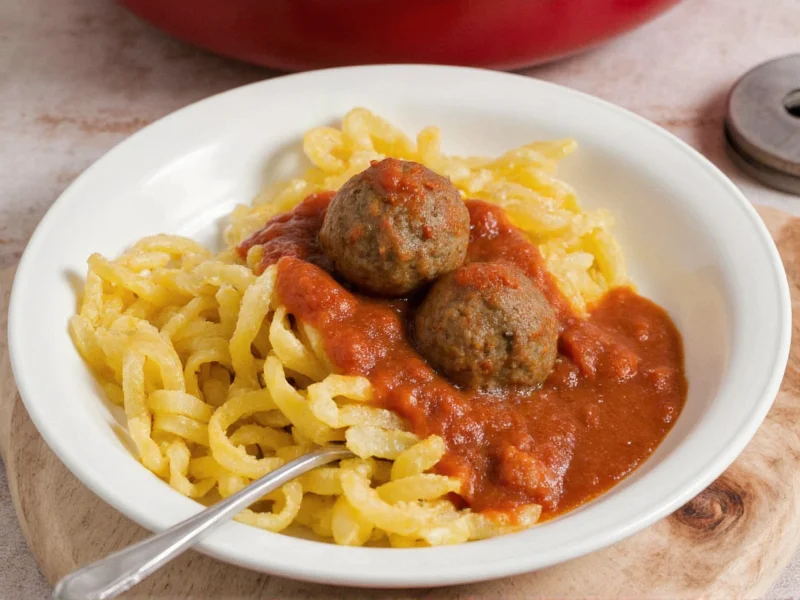These Bisquick sausage balls have become a staple at gatherings across America for good reason. The combination of savory sausage, buttery Bisquick, and melted cheese creates bite-sized delights that disappear faster than you can bake them. What makes this recipe exceptional is its perfect balance of convenience and homemade flavor - no fancy techniques required, just simple mixing and baking.
Why This Bisquick Sausage Ball Recipe Works
The magic happens through Bisquick's carefully formulated blend of flour, shortening, salt, and leavening agents. When combined with sausage and cheese, it creates a tender yet sturdy texture that holds its shape during baking while delivering that signature savory bite. Unlike recipes requiring multiple baking ingredients, Bisquick simplifies the process without sacrificing quality.
Complete Ingredient List
For best results, use these exact measurements:
| Ingredient | Amount | Notes |
|---|---|---|
| Raw pork sausage | 1 pound | Mild or spicy, removed from casing |
| Bisquick baking mix | 2 cups | Original formula works best |
| Sharp cheddar cheese | 1 cup | Shredded, not pre-shredded bagged cheese |
Essential Equipment
- Large mixing bowl
- Cookie scoop or tablespoon
- Baking sheet
- Parchment paper or silicone mat
- Wire cooling rack
Step-by-Step Instructions
- Preheat oven to 350°F and line baking sheets with parchment paper
- Break up sausage in large bowl, removing any casings
- Add Bisquick and cheese, mixing thoroughly with clean hands until completely combined
- Portion mixture using cookie scoop or tablespoon into 1-inch balls
- Arrange on baking sheets with 1 inch between balls for expansion
- Bake 18-20 minutes until golden brown and internal temperature reaches 160°F
- Cool 5 minutes on baking sheet before transferring to wire rack
Pro Tips for Perfect Sausage Balls Every Time
Professional kitchen-tested techniques that elevate your easy sausage ball recipe with Bisquick:
- Cold ingredients work best - Chill sausage and cheese before mixing for less greasy results
- Don't overmix - Combine just until ingredients are incorporated to prevent toughness
- Uniform sizing ensures even cooking - use a #40 cookie scoop for consistent 1-inch balls
- Rotate pans halfway through baking for even browning in home ovens
Delicious Variations to Try
Customize your 3-ingredient sausage balls with these popular twists:
- Spicy jalapeño - Add ¼ cup finely diced jalapeños and ½ teaspoon cayenne
- Bacon ranch - Substitute 4 slices cooked bacon (crumbled) and add 2 tablespoons ranch seasoning
- Everything bagel - Roll finished balls in everything bagel seasoning
- Gluten-free option - Use Bisquick Gluten Free mix with certified GF sausage
Serving and Storage Guidelines
These make-ahead sausage balls are perfect for busy hosts. Store cooled sausage balls in an airtight container:
- Room temperature: Up to 2 hours for immediate serving
- Refrigerator: 3-4 days (reheat at 300°F for 10 minutes)
- Freezer: 2-3 months (bake from frozen, adding 5-7 minutes to cooking time)
For holiday sausage ball recipe planning, prepare the mixture up to 24 hours ahead and refrigerate, then scoop and bake when needed. They pair perfectly with honey mustard, ranch dressing, or simply enjoyed plain.
Troubleshooting Common Issues
Even the simplest Bisquick sausage ball instructions can encounter problems. Here's how to fix them:
- Greasy balls: Sausage may have high fat content - try blotting cooked sausage before mixing
- Flat balls: Too much moisture - add 1-2 tablespoons extra Bisquick to absorb moisture
- Dry texture: Overbaked or insufficient fat - reduce baking time by 2-3 minutes next batch
- Uneven cooking: Inconsistent ball size - use measuring scoop for uniform portions
Frequently Asked Questions
Can I use frozen sausage for Bisquick sausage balls?
Yes, but thaw completely first and blot excess moisture with paper towels. Frozen sausage adds extra water that can make balls too wet. For best results with frozen sausage, increase Bisquick by 2 tablespoons to absorb additional moisture.
How do I prevent sausage balls from spreading during baking?
Chill the shaped balls for 15-20 minutes before baking. This firms up the fat in the sausage and Bisquick, preventing excessive spreading. Also ensure your oven is fully preheated to 350°F before baking for proper initial set.
Can I make sausage balls ahead of time for a party?
Absolutely! Prepare the mixture up to 24 hours ahead and store covered in the refrigerator. Scoop and bake just before serving for fresh, warm sausage balls. Alternatively, bake completely, cool, then reheat in a 300°F oven for 10-12 minutes before your event.
What's the ideal internal temperature for cooked sausage balls?
Sausage balls should reach an internal temperature of 160°F when measured with a food thermometer. This ensures the sausage is fully cooked while maintaining moisture. Visual cues include golden brown exterior and no pink color remaining in the center.
Can I cook sausage balls in an air fryer instead of oven?
Yes, air fryer sausage balls with Bisquick work well. Cook at 325°F for 10-12 minutes, shaking basket halfway through. Air fryer versions typically need 25-30% less cooking time than oven-baked. Watch carefully during the last few minutes to prevent over-browning.











 浙公网安备
33010002000092号
浙公网安备
33010002000092号 浙B2-20120091-4
浙B2-20120091-4